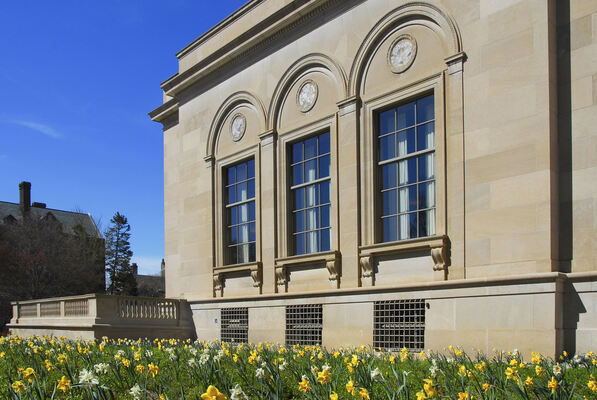This collection contains 212 letters, postcards, greeting cards, and telegrams that Second Lieutenant Arthur Richard Roussin ("Dick") of Durand, Michigan, sent to and received from his parents during his service in the United States Army, February 1944-August 1946. Roussin wrote about life at Fort Benning, Georgia; Camp Stewart, Georgia; and Camp Robinson, Arkansas, from February 1944-April 1945, and about his experiences traveling to and serving in Yokohama, Japan, from October 1945-August 1946. His parents shared personal and local news and discussed their store in Durand.
This collection contains 212 letters, postcards, greeting cards, and telegrams that Second Lieutenant Arthur Richard Roussin ("Dick") of Durand, Michigan, and his parents exchanged during his service in the United States Army from February 1944-August 1946. Roussin wrote about life at Fort Benning, Georgia; Camp Stewart, Georgia; and Camp Robinson, Arkansas, from February 1944-April 1945, and about his experiences traveling to and serving in Yokohama, Japan, from October 1945-August 1946. His parents shared personal and local news and discussed their store in Durand. Roussin also received a few letters from other acquaintances.
The first letter, from Durand's high school, pertains to his academic affairs (May 21, 1943), and the remaining correspondence relates to his time in the military. The bulk of the collection falls within two time periods: February 19, 1944-April 25, 1945 (120 items), and October 12, 1945-January 31, 1946 (98 items); 6 additional items are dated February 4, 1946-August 24, 1946. Roussin wrote 122 letters to his parents, received 90 letters from his parents, and received 13 letters from other correspondents. Some envelopes contain multiple items or letters written over the course of several days, and some letters enclose newspaper clippings.
Roussin's earliest letters home concern training exercises at Fort Benning, Georgia; Camp Stewart, Georgia; and Camp Robinson, Arkansas, where he was stationed from February 1944-April 1945. He described specific tasks, such as his work with machine guns, and the everyday occurrences of camp life during infantry training. He sent his parents 3 picture postcards of sights in and near Camp Stewart, Georgia, in the summer of 1944, and commented regularly on his training experiences until mid-March 1945. Between March and April 1945, Roussin's parents wrote almost daily about their lives in Durand, Michigan. Their letters include updates on their son "Gene," war news, descriptions of social activities, and discussions about their store. On March 20, 1945, a friend sent Arthur R. Roussin a postcard depicting the Supreme Court building in Washington, D.C.
The Roussins resumed their correspondence in October 1945, when Arthur, then a second lieutenant with "Infantry Company B, 4th Platoon" (his mail traveled through the 194th Quartermaster Detachment APO), anticipated his deployment to Japan. He mentioned his duties as his unit prepared to sail from California, and described his journey from the United States to Japan onboard the USS General George M. Randall. After his arrival in Tokyo on November 1, 1945, he traveled to the Naval Air Facility Atsugi and to Yokohama, where he was stationed until the following August. While in Yokohama, Roussin wrote to his parents about his daily activities, such as bookkeeping duties for a post exchange (PX) store, visits to Tokyo, and his social life. He sometimes reported on his drinking habits and explained the army's rationing system for alcohol, which divided drinks into several classes before distribution. During this period, he occasionally received letters from his mother and father, who continued to discuss their daily lives and local news, including the possibility of labor strikes. On December 29, 1945, Roussin mentioned a fire in the PX warehouse, and on February 4, 1946, reassured his parents that he had not been seriously injured in a recent car crash, though a friend had been killed. He also sent postcards of Mount Shasta (California) and of a Japanese building. His final communications are three telegrams from late August 1946, in which he shared his expectation of an imminent journey home.
Arthur Richard Roussin often wrote on decorated U.S. Army, U.S. Navy, American Red Cross, or personal stationery. One letter has a humorous printed illustration of a family of birds (June 15, 1944), and Roussin drew a picture of a cyclone in his letter of October 22, 1945.
